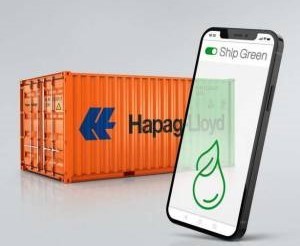The recent case of the grounding of the Ever Given in the Suez Canal has led to various considerations, not only on the economic repercussions on a global scale of such an event, but also on the broader issue of polluting emissions and the consequent impact on the environment and health of the so-called “naval gigantism” phenomenon.
Maritime transport generates an important share of the polluting emissions produced in our country, estimated at 940 million tonnes of CO2 per year, the equivalent of about 2.5% of global greenhouse gas emissions. To make matters worse, Italy’s particular morphology has meant that cities were historically built around maritime trade hubs, with the effect that today the main ports are located in densely populated areas (if not even in city centers).
It is therefore essential to move towards a policy of decarbonization of the entire transport sector. In this context, the issue of cold ironing (i.e., quay electrification) comes into play, which is the system that allows ships to turn off their main and auxiliary engines while in port, receiving the energy needed to keep functioning from the shore. The process is based on the connection of the vessel to the electrical network on land, so as to be able to turn off their engines and get their emissions down to zero in port.
The supply of energy from the electrical network would have positive effects on both the quality of the air in residential areas and the containment of noise emissions. Although there are clear advantages, for some segments (like cruise ships, which due to their size may require a greater use of energy than other types of vessels) and port areas, other measures aimed at reducing emissions may be more suitable and more convenient. Not to mention that opting for cold ironing entails high installation costs (this technology requires both quay electrification and modifying the ship in order to connect it to the network) and with the equally high costs of electricity consumption.
In short, cold ironing is certainly not the solution but it is one of the solutions. The recent report prepared jointly by Enel X and Legambiente (Italian environmentalist association – translator’s note) on “Green Ports: the route to sustainable development” indicated the best practices for greater sustainability in ports. The main guidelines are, in fact, the development of cold ironing, the decarbonization of maritime transport, implementing links between ports and the rail network for setting up green corridors and finally the electrification of shortsea shipping
Among the key policy actions, identified in the report, to which priority should be given in 2021, the following have been indicated (i) the establishment of an electricity tariff specifically for cold ironing, making it competitive compared to using ship engines (ii) public funding or co-funding schemes to accelerate the transition of the Italian port system towards sustainability (a path already initiated in other European countries) (iii) the promotion of the progressive use of renewable energy sources in ports, (iv) a national roadmap providing for the electrification of the entire port system and, finally, (v) the development of interconnections with the national railway system to encourage electrically-powered transport and rail transport over medium and long distances. As an example, the cold ironing of the 39 Italian ports of the TEN-T network alone would avoid the combustion of over 635,000 tonnes of marine diesel fuel every year.
Therefore, teamwork from the whole sector is needed and the first step is certainly the drafting of the Energy and Environmental Planning Document of the Port System (DEASP) that the individual Port Network Authorities must promote on the basis of guidelines adopted by the Ministry of Environment as provided by Legislative Decree no. 169 of August 4, 2016 as amended by Legislative Decree no. 232 of December 13, 2017. The DEASP, in addition to defining the green strategies and policies of the port system, should also identify concrete measures to improve energy efficiency and promote the use of renewable energy.
At international level, in line with the temperature containment targets agreed at the Paris Climate Conference, EU Directive 2016/802 of the European Parliament has already stipulated that ships berthed for more than two hours in EU ports must either use fuels with a sulfur content of no more than 0.1% or switch off their engines. If we just consider the European scene, the port of Marseilles has long since implemented three new shore-side electricity supply systems for ferries and by 2025 has the ambitious goal of becoming a 100% electric port. The port of Rotterdam is expected to install ten shore power systems shortly, helping to accelerate the supply of shore-side electricity. The investment is expected to be in the range of 125 million euros.
The time is ripe for a decisive change of course and for a rethinking the entire system, which must necessarily have as its objective a global vision aimed at limiting emissions from the entire supply chain as a whole. One of the first steps is certainly to implement a clear paradigm shift in the port sector (which might appear to the less attentive as a Copernican revolution, but which is already underway): the transition from a ship-to -shore /shore-to-ship focused model in which the port and the port community will (re)acquire their natural centrality.
So, it’s really the right time to say “full steam ahead!”
Translation by Giles Foster




